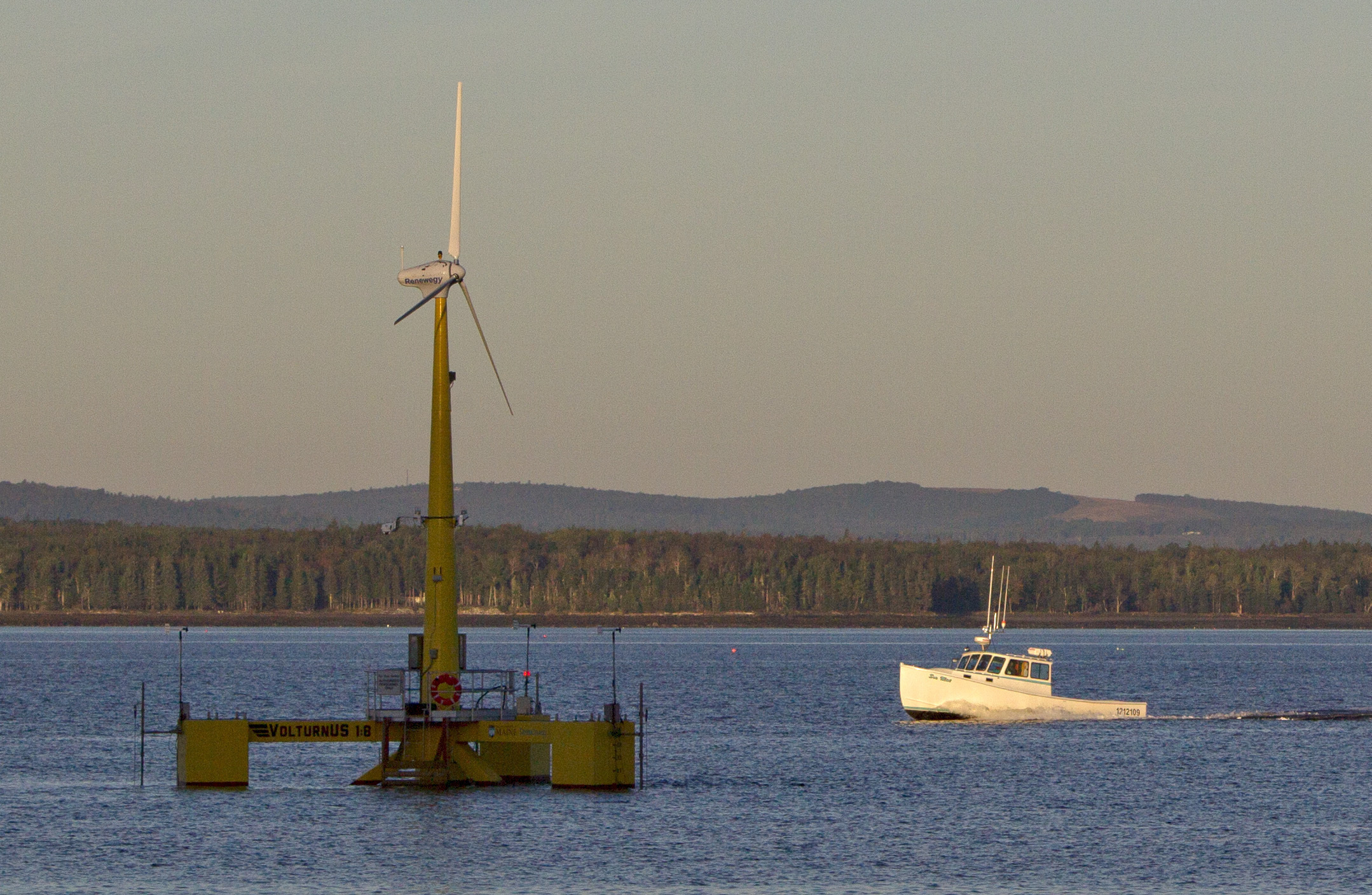BOSTON — Massachusetts and Rhode Island announced the selection of 2,878 megawatts (MW) of offshore wind in the first coordinated procurement of its kind. As a part of the procurement, Massachusetts selected 2,678 MW in total from three projects. This selection is New England’s and Massachusetts’ largest offshore wind selection to date, representing nearly 20 percent of Massachusetts’ overall electric demand, marking a major step forward for offshore wind generation and supply chain.
Through this procurement, offshore wind will power over 1.4 million Massachusetts homes and reduce the state’s carbon emissions by the equivalent of taking one million gas-powered cars off the road. Collectively, these projects will create thousands of jobs and generate billions of economic activity.
Massachusetts selected 1,087 MW of the 1,287 MW SouthCoast Wind multistate project, 791 MW of the 791 MW New England Wind 1 project, and up to 800 MW of the 1,200 MW Vineyard Wind 2 project.
“Today we are proud to announce that, along with our partners in Rhode Island, we are taking an important step towards energy independence, cleaner air and transforming our economy. Simply put, we are going big,” said Governor Maura Healey. “This selection is New England’s and Massachusetts’ largest offshore wind selection to date. We’ll power 1.4 million more Massachusetts homes with clean, renewable energy, create thousands of good, union jobs, and generate billions of dollars in economic activity. The world will look to New England for the future of clean energy.”
“This historic offshore wind selection is an important building block to our regional offshore wind industry,” said Lieutenant Governor Kim Driscoll. “This year, we broke ground on a new offshore wind port in Salem, expanded our terminal in New Bedford, invested in job training and academic programs and won $389 million in federal funds for transmission. Like any new industry, offshore wind has faced headwinds, but our coalition of states is rising to meet the challenges and seize the tremendous economic, climate, and energy opportunities on the other side.”
“Today marks a historic milestone for Rhode Island and Massachusetts as we join forces to drive the largest offshore wind procurement in New England’s history,” said Rhode Island Governor Dan McKee. “With this project, Rhode Island is taking a significant step forward in meeting our Act on Climate goals and building a clean energy economy that benefits all Rhode Islanders. Together with Massachusetts, we are setting a precedent for regional collaboration in clean energy and advancing a sustainable, resilient future.”
“Today New England is showing continued leadership on seizing offshore wind opportunities, as part of nationwide clean energy progress that is surging under the Biden-Harris Administration,” said White House National Climate Advisor Ali Zaidi. “Just yesterday, the United States surpassed fifteen gigawatts of offshore wind projects approved – all under the Biden-Harris Administration – and today’s step forward by New England will help create even more good-paying jobs and local economic benefits as we strengthen the power grid with clean American energy. We will continue harnessing tools from President Biden’s Investing in America agenda to enable this progress, including federal funding awarded last month for New England grid upgrades, to support the growth of a new American industry that is activating factories, ports, and shipyards across the nation.”
About the Projects
All three projects intend to utilize Project Labor Agreements (PLAs), create thousands of jobs and direct investments in the regional economy. All of New England’s purpose-built offshore wind ports in New England – New Bedford, New London, Salem, and Providence Port – will have tenants through 2032 as a part of this selection.
The SouthCoast Wind project expects to provide 3,915 high-paying jobs in Massachusetts and Rhode Island and will invest in programs, including through partnerships with Bristol Community College/National Offshore Wind Institute and the Massachusetts Maritime Academy, to offer training to Massachusetts residents to work in every level of the offshore wind industry. Construction on the project is expected to start in 2025 and is expected to deliver power by 2030.
Avangrid’s New England Wind 1 project will create 4,400 full-time equivalent jobs. Avangrid has a PLA with the Massachusetts Building Trades Council for onshore construction work, and the National Building Trades Union for offshore construction. The project will provide $130 million in upfront and lease payments to spur the development of the offshore wind marshaling port in Salem and will locate an operations and maintenance hub in New Bedford. The New England Wind 1 project can begin construction as early as next year, with an expected commercial operations date in 2029.
The Vineyard Wind 2 project will generate 3,800 job-years of employment across New England, with 80 percent in Massachusetts. The project will also provide up to $37.5 million in directly funded initiatives to foster a diverse, inclusive offshore wind workforce and supply chain, help address energy burden for low- and moderate-income households, advance regional research efforts in fisheries and the environment, and establish the region as a global climate innovation lab. The Salem Offshore Wind Terminal will be the staging site for the project’s wind turbine installation and O&M will be located in New Bedford.
“Our region is heavily reliant on gas that comes to us from pipelines and ships. For decades, our entire region has experienced significant swings in prices while also worrying about reliability. Offshore wind will bring stability to Massachusetts at a critical time,” said Massachusetts Secretary for Energy and Environmental Affairs Rebecca Tepper. “Combined with solar and hydropower, Massachusetts future resource mix promises stability as our economy continues to grow. By going big with projects now, we will be able to get ahead of the world in the global race for developers, vessels, materials, and expertise.”
“Offshore wind is a critical tool in fighting climate change,” said Massachusetts Commissioner of Energy Resources Elizabeth Mahony. “Every year of progress we make in fostering this important clean energy source is a step closer to ending our reliance on costly and polluting fossil fuels. Hot summers, stormy seas, and devastating floods are hitting communities across New England hard. We’re grateful to our partners in Rhode Island for joining together on the solution and I’m proud of my team for leading the state’s first direct procurement of offshore wind.”
The multistate project selection breakdown is as follows:

* Other entities may join this procurement.
Recent Advancements
Together, these three projects will accelerate the offshore wind industry by ushering in investment in the domestic supply chain and port infrastructure. Recent analysis from the U.S. Department of Energy found that the offshore wind industry will achieve “liftoff” when the sector deploys a steady stream of projects, beginning today, to help states achieve state clean energy targets. Today’s announcement from the three states represents a substantial contribution toward the goal of deploying the first 10 to 15 GW of U.S. offshore wind, which will establish the key enabling infrastructure and supply chain investment to support a long-term domestic offshore wind industry.
The selection marks crucial progress towards Massachusetts achieving its goals for reducing emissions from the power sector and builds on recent regional achievements. The Commonwealth’s Clean Energy and Climate Plan anticipates offshore wind will be the primary source of electricity in the decarbonized energy system. This selection brings the Commonwealth 2,678 MW closer to its statutory target to procure 5,600 MW of offshore wind by 2027. Last month, the U.S. Department of Energy selected the New England states’ Power Up New England proposal for $389 million in federal funding to support investments in offshore wind transmission and multi-day battery storage infrastructure. In addition, federal regulators accepted an ISO New England proposal to implement a new, state-driven procurement process for regionally beneficial transmission. This approval positions the New England states to request that ISO New England issue a competitive solicitation for proposals to address longer-term transmission needs, such as transmission to interconnect offshore wind or other clean energy resources, in late 2024 or early 2025. And next week, Massachusetts will host the 45th annual New England Governors and Eastern Canadian Premiers Conference, where the key topics of discussion will be hard-to-decarbonize sectors and offshore wind supply chain.
In Rhode Island, the project would build upon Rhode Island’s goal of increasing the state’s renewable energy portfolio with additional offshore wind energy, which would increase to 630 megawatts of total offshore wind capacity with this next offshore wind project.
“Rhode Island is happy to work together with Massachusetts to continue our offshore wind investments and advance our state’s commitment to a 100% renewable energy standard by 2033,” said Rhode Island Office of Energy Resources Acting Commissioner Chris Kearns. “The selected project by Rhode Island Energy would grow the state’s offshore wind resources, over the long-term reduce our dependence on fossil fuels, provide support to the state’s transition to electrification measures and provide good economic development and job opportunities.”
Next Steps
Following this announcement, the Massachusetts Electric Distribution Companies (EDCs) will begin contract negotiations with the selected developers. Additionally, DOER and MassCEC will begin negotiating a Memorandum of Understanding (MOU) with each developer to memorialize and track the commitments made in their bids regarding economic development, environmental justice communities, and low-income ratepayer benefits. Contracts resulting from this solicitation will be filed with the Department of Public Utilities (DPU) for review and approval. When contracts are filed at the DPU, more information about the projects and the evaluation process will be made public, including project pricing and net benefits analysis, and economic development commitments. DOER estimates contracts will be filed at the DPU this winter.
Similarly, Rhode Island Energy (RIE) will begin contract negotiations with the selected developer. Additionally, RIE and the Rhode Island Office of Energy Resources will begin to work with Commerce Rhode Island on a Memorandum of Understanding (MOU) with the selected developer to memorialize and track the commitments made in their bid regarding economic development. Any contract resulting from this solicitation will be filed with the Rhode Island Public Utilities Commission (PUC) for review and potential approval. If a contract is filed at the PUC, more information about the project and the evaluation process will be made public, including project pricing and net benefits analysis. RIE estimates a contract may be filed at the PUC this winter.
Tagged with wind





